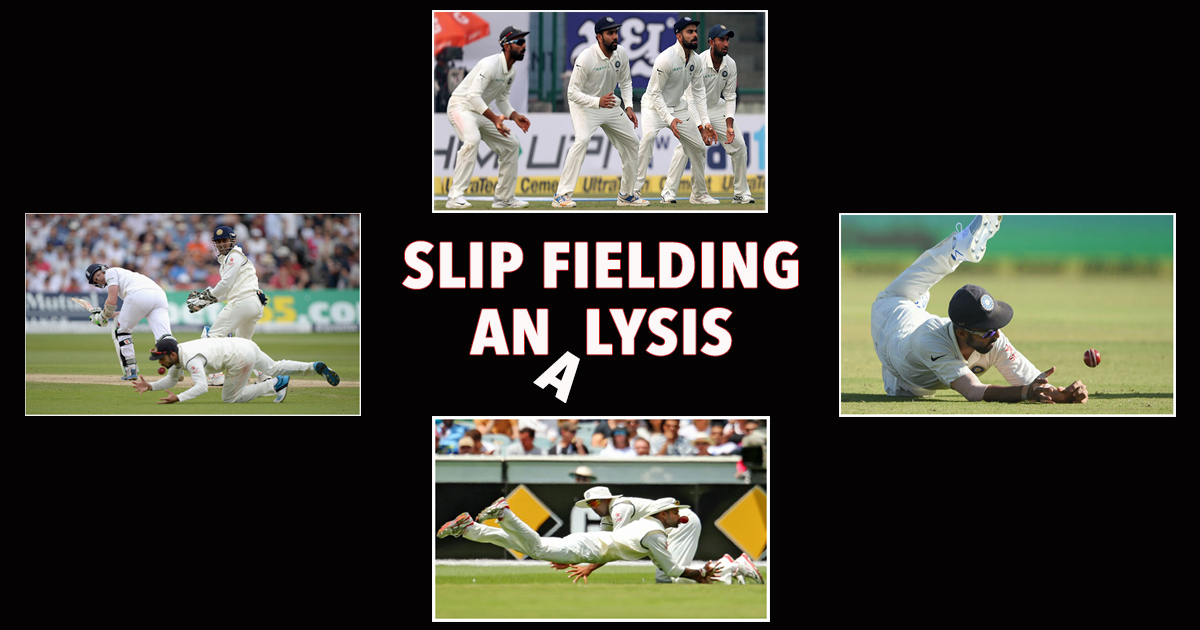India’s slip cordon - A problem that screams for a desperate solution
Sometimes, a moment can make a cricketer a hero or the villain in a flash. It would be blasphemous to say that Pankaj Singh would have reached dizzying heights had Ravindra Jadeja grabbed Alastair Cook’s catch in the slips, but it would certainly remain as one of the saddest moments of his career.

Cook was on 15 that day and was under fire for his terrible performances. The then English skipper had a point to prove and it seemed like the insane numbers that he had racked up for England in the red-ball cricket were ages ago. And the catch could have piled on the pressure on the underperforming captain and handed even more ammunition to the ever-so active English media. But lady luck was with him that day and after the drop, Cook went on to score 95 to revive his career and Pankaj - the fine swing bowler that he has been for Rajasthan - went back to the rigmarole of Indian domestic cricket and consequently became just another workhorse in the Ranji Trophy.
While it is easy to discount the incident as one-off since the fact that R Sridhar's inclusion in the team set-up as the fielding coach changed the dynamics of Indian fielding - both in the circle and in the deep - for good, it is a fact worth noting that India's slip cordon after the Rahul Dravid-VVS Laxman era has been a big area of concern. To put the matter at hand into perspective, India has dropped 46 catches and taken only 38 since 2013 which means that the Indian slip cordon has failed to take as many as 55% of catches in the last five years.
Over the course of that period, India has employed Murali Vijay, Shikhar Dhawan, KL Rahul, Virat Kohli, Ajinkya Rahane, Rohit Sharma, Karun Nair, R Ashwin, and Ravindra Jadeja in the cordon without any considerable amount of success. While Rahane and Nair can claim to be natural at the position, the other player's technical mistakes cost India dearly.
To be a close-in fielder - either at slip or gully or short leg or silly point - one doesn't necessarily need the legs to cover ground, rather he needs to completely focused on the job at hand. Because, unlike other positions on the field, standing in slips need the players to focus on so many factors, but nothing is more important than the release point of the ball. While the first slip fielder must watch the ball right from the time it leaves the bowler's hand, the other slip fielders should only look at the edge of the bat and need to be prepared accordingly within a flash second.
As was seen in the Cape Town Test in January, Shikhar Dhawan dropped Keshav Maharaj when the latter was on 0 and eventually the all-rounder went on to score a useful 35 runs in the innings. The one noticeable
And as Daryll Cullinan, a long-time first-slip fielder for South Africa, once told Cricinfo in an interview, “The moment you are wide, the ability to track the ball becomes compromised. You don't see a goalkeeper defending a penalty kick with feet wide. You will see him come forward, feet come together, so he has got the agility to go left or right. The moment you are working
There is another theory attached to it. Temperament also plays a big part while fielding in the slips. It is not very excitable to stand in the slips and instead players need to wait for long periods without an edge and be ready for each and every ball. And also, unlike the normal ground fielding, the slip fielders must not go towards the ball and rather allow the ball to come to them so as to give them more reaction time to reduce the momentum of the ball. But, as things go, Indian fielders, with the exception of Rahane, have been the complete opposite of the coaching manual and the result is there to be seen.
Also, India needs to make some change in their placements as well. In the last tour of England, Indian fielders stood too deep and also too close to each other. While that is okay in sub-continent, where spinners have been more prevalent, in England, the fielders need to spread a bit to cover a large area.
While injuries and team selection - Virat Kohli is yet to field an unchanged XI in Test cricket - have been attributed to India’s failure in taking the catches at slip, the fielders like Vijay, Kohli and Pujara have been regulars in the team, which makes the explanation a bit surprising. Sure enough, it would take a lot to replace the duo of Dravid and Laxman at the cordon, but cricket is defined by continuity rather than full stops. Everyone is replaceable and it just needs a right amount of concentration and technique from Indian slip fielders to stop themselves from letting their bowlers down. A wicket in England matters a lot, at least at a time, when India aspires to win the series after a gap of 10 years, more so with the absence of Bhuvneshwar Kumar.
INDIA vs ENGLAND! Will we make it on top? Start Predicting Today!
Play & Win Today! Click here here to download Nostra Pro & get ₹40 Joining Bonus!
Predict Matches & Win Cash!! Play NostraGamus on Android - predict ANY Sport & win upto ₹10 Lakhs! Click here to Download & Get ₹40 Cash Bonus!

Comments
Sign up or log in to your account to leave comments and reactions
0 Comments